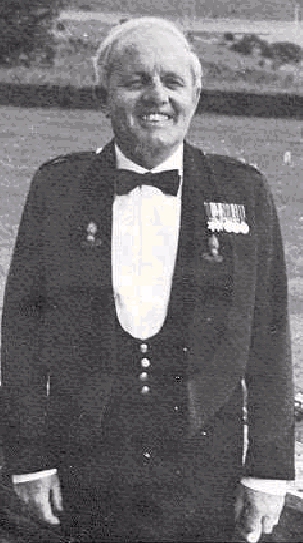 After 51 years service, Bob
Ferguson finally retired on 26 October last year. He first
enlisted in December 1931 as a boy soldier at the Army Technical
School, Chepstow.
After 51 years service, Bob
Ferguson finally retired on 26 October last year. He first
enlisted in December 1931 as a boy soldier at the Army Technical
School, Chepstow.This was followed by sapper training at the Training Battalion in Chatham in 199 Party, the first all ex-boy party. At the end of training, the whole party were posted, in 1935, to 54 Field Company at Bulford and it was with that unit that he first visited the RE Bridging Camp, Wyke Regis, for bridging training. It was, therefore, appropriate that some 47 years later, when he retired as the Assistant Commandant RETC, 54 Squadron JLRRE presented him with one of his most treasured mementos, a picture depicting the activities of the Junior Leaders. It is worth recording that the method of transport from Bulford to Wyke Regis in 1935 was Shank's pony; 54 Company marched the 56 miles in two days and were fed en route from horse drawn kitchens. After training at Wyke, 54 Company moved to Palestine and Lance Corporal Ferguson was posted to Chatham, as a junior instructor in the E & M School.
World War II came in 1939 and, as a Staff Sergeant, he was attached to an RA Searchlight Regiment and went to France, returning to England six months later via Dunkirk. After a short spell in a Chemical Warfare Battalion in 1940, he joined 570 Corps Field Park Squadron in Ottery-St-Mary, where he met his wife and where he has now retired. With this unit, he saw service in North Africa in the early battles under General Wavell and, finally, at Alamein in the 8th Army. It was at Benghazi that he was mentioned in despatches for distinguished service.
After the fall of Tunis in 1943, he returned to Ismailia, on the Suez Canal, to the OCTU. On commissioning as a lieutenant, he was posted to 871 Mech Equipment Regiment as a troop commander and worked on the reconstruction of the runways of Benghazi and Tripoli aerodromes.